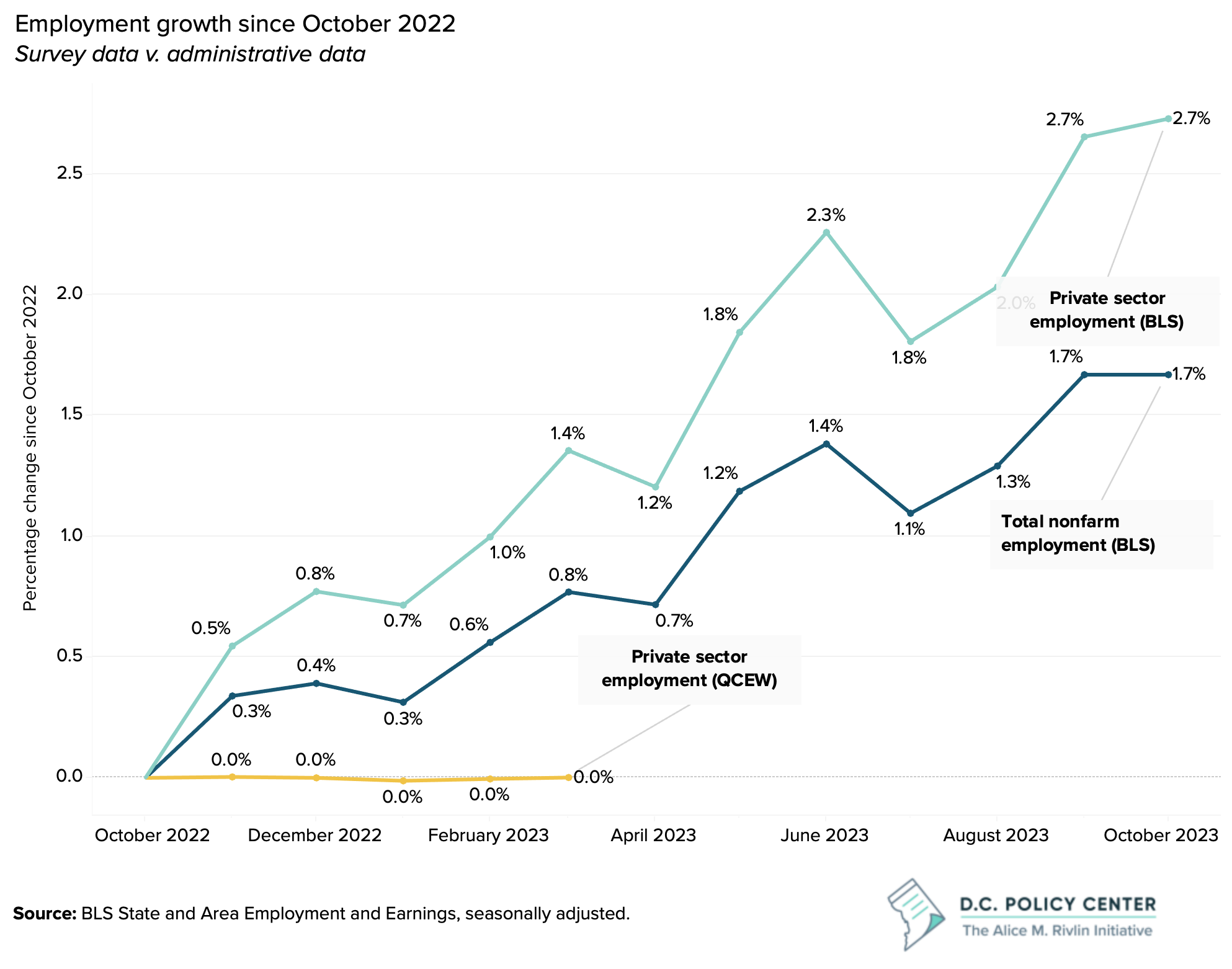On Friday, November 17th, the Bureau of Labor Statistics (BLS) released its “State Employment and Unemployment Summary” for October 2023. The data show that, since October 2022, total private employment grew by 2.7 percent, while total nonfarm employment only grew by 1.7 percent. Put in numbers, private employment added 14,500 jobs, but nonfarm employment only added 12,800 jobs. And October 2023, as the chart indicates, appears to have been another month of sluggish job growth in D.C.
The numbers for October 2023 are preliminary and will likely be revised. Importantly, these monthly job numbers—known as Current Employment Statistics (CES)—are estimates based on a monthly survey of businesses and government agencies. While the Current Employment Statistics are considered some of the most reliable, comprehensive, and quickest sources of information on employment, it is still important to remember that the numbers are estimates, and thus subject to error.
In the case of the District of Columbia, it is possible that the job growth captured by CES is noise. The BLS releases a list of states where annual job growth has been statistically significant. And in the past year, the District has not made this list.
The alternative to CES are data from Unemployment Insurance Tax Records, which are tracked through the Quarterly Census of Employment and Wages (QCEW). QCEW is based on administrative records, and therefore is not subject to sampling error. But QCEW is reported quarterly with about six months of delay.1
This administrative data shows virtually no growth in employment in D.C between October 2022 and March 2023. During this period, total employment reported for administrative purposes declined by 410, and private sector employment increased by 712.
There are other differences between CES and QCEW2 that might explain the discrepancies in the data. But the lack of growth in employment as tracked by administrative data is reason for concern.
The BLS also released resident employment data for October 2023. This data—which is also subject to sampling error and revision—also tells a disconcerting story. Since October 2022, D.C. increased its resident civilian labor force by roughly 2.3 percent. This growth means that more people have been looking for jobs in the past year. But employment growth for DC residents regardless of their job location has not kept up. Since October 2022, employment only grew by 1.4 percent. In numbers, while 8,874 people joined the resident labor force over the past year, resident employment only increased by 5,275. Put simply, the local economy has not been adding enough jobs.
Endnotes
- Additionally, QCEW report only filled jobs of potential interest for unemployment insurance purposes. Self-employed workers, elected officials, some domestic workers, and most student workers at schools are excluded. Therefore, QCEW employment figures tend to be smaller than CES.
- CES is more comprehensive, as it includes full and part-time employees as well as temporary workers, whether they are paid or not (on leave) during that week. QCEW excludes workers who do not qualify for unemployment insurance, such as Self-employed workers, elected officials, some domestic workers, and most student workers at schools.
